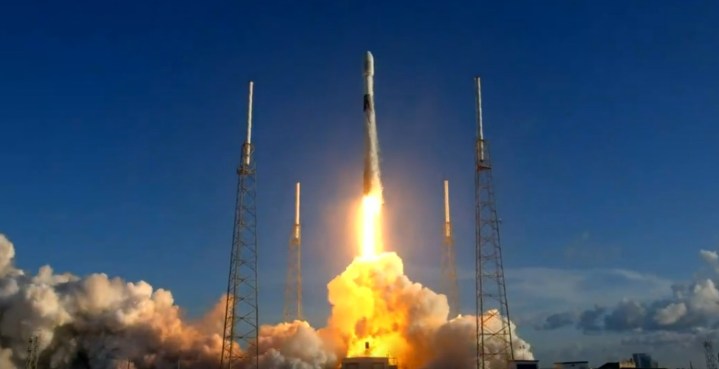South Korea began its first mission to the moon this week with the launch of its Korea Pathfinder Lunar Orbiter (KPLO) mission from Florida. Using a SpaceX Falcon 9 rocket, the uncrewed spacecraft was launched on a course to enter orbit around the moon in a year-long mission which sees the country becoming one of a small group of nations to launch lunar missions.
Liftoff! pic.twitter.com/dAQGvpcOCX
— SpaceX (@SpaceX) August 4, 2022
The KPLO spacecraft launched from Launch Complex 40 at Cape Canaveral Space Force Station in Florida, with liftoff at 7:08 p.m. ET on Thursday, August 4 shown in video footage shared by SpaceX. The spacecraft will now travel for four and a half months, using a fuel-efficient path called a ballistic trajectory which will take it into orbit around the moon. It will enter a polar lunar orbit at 62 miles (100 kilometers) and will begin an 11-month mission to collect geological and other data.

The orbiting spacecraft has been named Danuri, which combines two Korean works meaning moon (da) and enjoy (nuri). In a nod to one of Korea’s most popular cultural exports, the wireless space communication system which the orbiter will try out during its mission will use the song Dynamite by K-pop band BTS in a test. Called the Disruption Tolerant Network experiment payload (DTNPL), the idea is to work on a communications network that can handle disruptions.
Further hardware on the orbiter includes a NASA instrument called ShadowCam which will investigate craters on the moon that are perpetually in shadow, looking for resources such as water that could be held there. Other instruments will investigate gamma-ray bursts, the magnetic field between Earth and the moon, and a high-resolution camera for taking images of the moon’s surface.
“If this mission succeeds, South Korea will become the seventh country in the world to have launched an unmanned probe to the Moon,” an official at the Korea Aerospace Research Institute said to AFP, as reported by Al Jazeera. “It is a huge moment for South Korea’s space development program, and we hope to continue contributing to the global understanding of the Moon with what Danuri is set to find out.”
Editors' Recommendations
- SpaceX’s Falcon 9 rocket just completed a milestone mission
- SpaceX already has a date in mind for next Starship launch
- SpaceX is gearing up for a record-breaking rocket flight
- Crew-8 launches with small crack in capsule, but SpaceX says it’s safe
- How to watch SpaceX Crew-8 launch to the space station tonight



